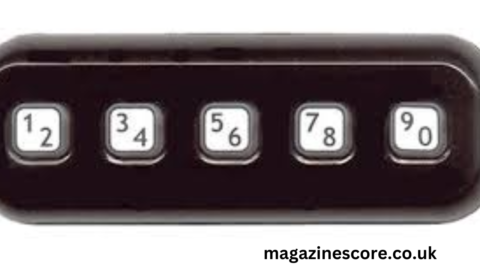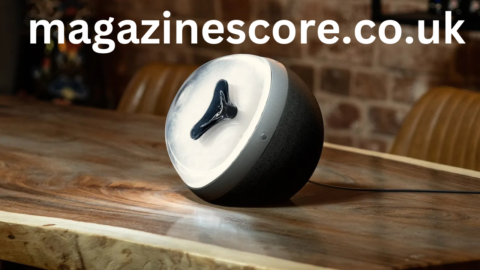If you have weak mobile reception, you may have heard about this option: installing a BT mobile signal booster to improve your connection. While certain benefits come with it, some information circulating about this tech is just myths. So let’s dispel 7 most common misconceptions about signal boosters and figure out, how they actually work.
Myth #1: Mobile Signal Boosters Are Illegal
One of the biggest myths about signal boosters is that they are illegal. This is not the case! The confusion probably started with the fact, that you do have to follow certain regulations. But in many cases, BT signal repeater are perfectly legal, provided you get them from reputable companies like UCtel.
So while boosters should not interfere with the mobile network, they do fall under certain regulations. This is the reason why it’s a good idea to only get them from reliable providers. In this way, you can make sure that the boosters are up to a standard and won’t interfere with the overall network. This leads us to the next point.
Myth #2: Signal Boosters Cause Interference to Cell Towers
Sometimes, people think that if you amplify a signal, it’s going to interfere with how a cell tower works. The truth is that signal boosters that are available on the market today are built to work harmoniously with cell towers.
Such legal boosters do not create any kind of interference. Most importantly, they improve the signal for your mobile phone. This process is fine-tuned to ensure that the network services are not disrupted in any way.
Myth #3: Signal Boosters Don’t Work in Rural Areas
The reason that many people believe in this myth is that mobile signal boosters work well only in locations with strong signals, such as towns or cities. For some people, boosters don’t serve the same function when taken into remote areas.
This is yet another misconception. Some signal boosters are indeed effective in rural areas. Those prove more useful in locations with very poor mobile signal coverage. Some types of boosters are designed specifically to enhance a weak signal from far-away cell towers to make it stable. So if you live way in a rural area and have a really lousy signal, then you can consult with a provider like UCtel to pick the right booster for you. And this actually ties perfectly into our next myth.
Myth #4: All Signal Boosters Are the Same
Lots of people seem to believe all signal boosters are the same and will work equally well under any conditions. The misconception then entails that it doesn’t matter which one you choose—it will work anyway! Right?
Well, not really. Not all signal boosters work the same way. There are many different types, including types of quality, power levels, and extra features. Generally, higher-quality boosters have better performance and can last longer, but some of them are still better fit for urban areas, and some for other conditions. So, do your research to find one that best fits your needs.
Myth #5: Installing Boosters is Difficult
There is an opinion that a signal booster is hard to install or requires the person to be a technical guru to do it right. This may discourage people from buying this tech and missing out on its benefits.
In reality, most BT signal amplifiers do not require any special tools or technical knowledge for their installation. In fact, many of them are plug-and-play, meaning that users can get them up and running within the shortest time possible. Normally, most boosters include instructions too, and all the parts needed to get started. So setting up a booster should not take that much time or effort.
Here is a quick list of what you’re probably going to do when installing a signal booster:
Find a good spot for the outside antenna. Typically it’s on your roof or an outdoor wall where it can pick up the best signal.
Mount the outside antenna. Attach the antenna to its mounting bracket and place it in the chosen location.
Run the cable. Use the coaxial cable to connect the external antenna to the signal booster. This cable will run the signal between the two devices.
Place the booster. Put the booster inside your home or office for it to distribute the signal.
Mount the internal antenna. This antenna should go in the area where you need to improve the signal—like a living room or office space.
Switch it on. Plug the signal booster into an electrical outlet and it power up.
These simple steps will help you to get most signal boosters up and running without a hassle.
Myth #6: Boosters Are Only for Voice Calls
Some may believe that signal boosters are designed only the voice-calling quality and cannot help in any other situations. As you may guessed, this is not the case.
Signal boosters do not only improve voice calls, but also fasten data loading, so they improve your internet browsing, streaming, and app usage experience too. Since they amplify the signal, boosters ensure faster and more reliable connections, making all of your mobile activities run smoothly.
Finally, there is the belief that signal boosters are too expensive and don’t offer good value for money spent.
Yes, signal boosters can indeed get pretty pricy. Most of the time, however, they are worth the investment. Think of what you’re getting in return: better signal strength, fewer calls cut short, quicker Internet, and improved connectivity in general.
These are advantages that can make a huge difference in your everyday life! It makes the cost of a good booster a reasonable investment. Not to mention, that many signal boosters will serve you for a very long time, so you are basically making a one-time investment.
Conclusion myths about
Now that we have busted 7 common myths about mobile signal boosters, you should have a better idea of what these devices can really do. Signal boosters are legal and regulated, myths about and come in different types for different purposes. They are relatively easy to set up and should offer you a
good deal for both myths about good voice and data connections.









